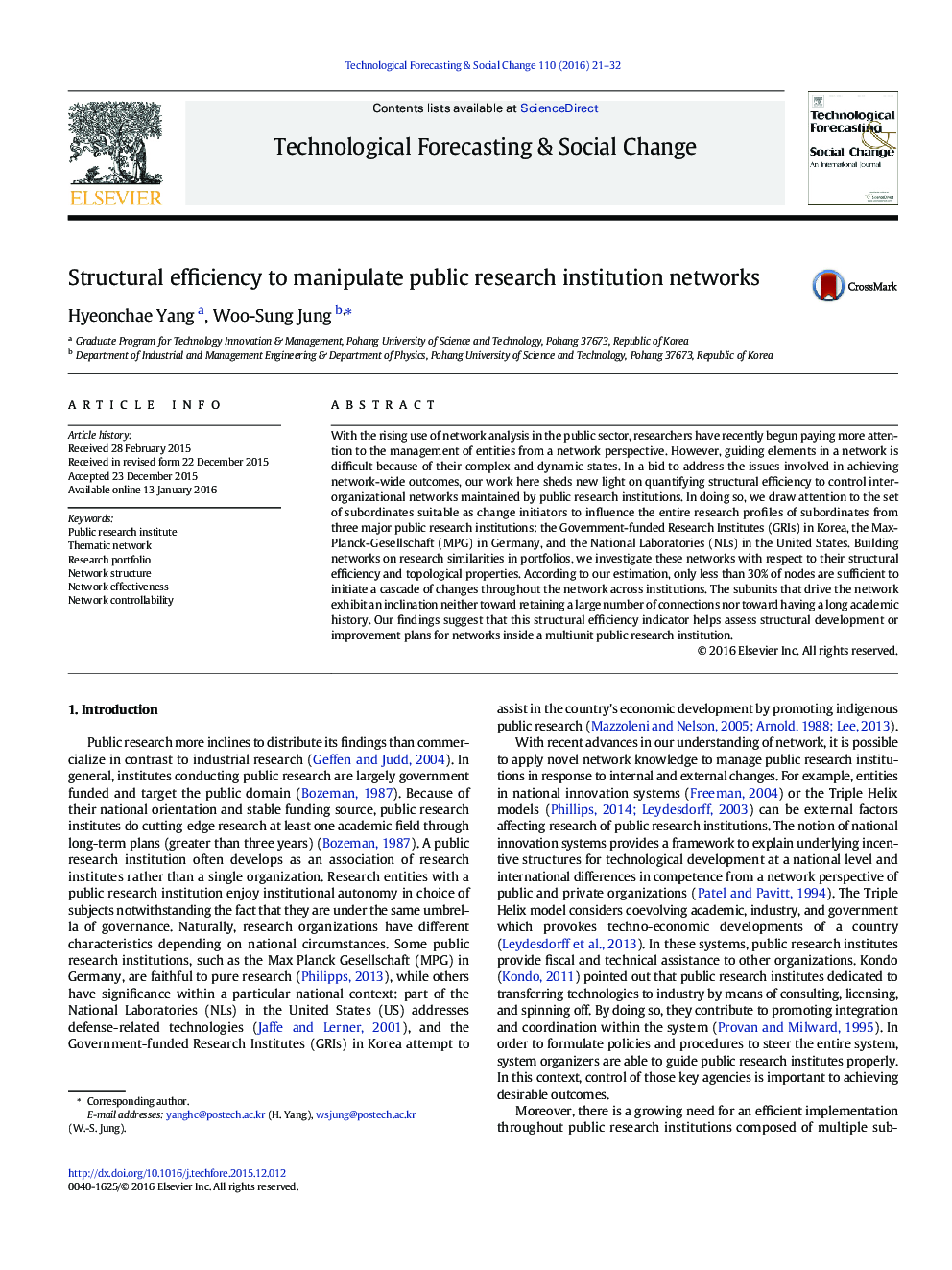| کد مقاله | کد نشریه | سال انتشار | مقاله انگلیسی | نسخه تمام متن |
|---|---|---|---|---|
| 896323 | 1472390 | 2016 | 12 صفحه PDF | دانلود رایگان |
• It is important to efficiently manage inter-organizational networks.
• We consider how efficiently public research networks to steer.
• We extract the minimum number of elements significant to manage the network.
• Nodes with a low connectivity tend to influence on network controllability.
• Important elements in driving networks tend to be fledging in the academy.
With the rising use of network analysis in the public sector, researchers have recently begun paying more attention to the management of entities from a network perspective. However, guiding elements in a network is difficult because of their complex and dynamic states. In a bid to address the issues involved in achieving network-wide outcomes, our work here sheds new light on quantifying structural efficiency to control inter-organizational networks maintained by public research institutions. In doing so, we draw attention to the set of subordinates suitable as change initiators to influence the entire research profiles of subordinates from three major public research institutions: the Government-funded Research Institutes (GRIs) in Korea, the Max-Planck-Gesellschaft (MPG) in Germany, and the National Laboratories (NLs) in the United States. Building networks on research similarities in portfolios, we investigate these networks with respect to their structural efficiency and topological properties. According to our estimation, only less than 30% of nodes are sufficient to initiate a cascade of changes throughout the network across institutions. The subunits that drive the network exhibit an inclination neither toward retaining a large number of connections nor toward having a long academic history. Our findings suggest that this structural efficiency indicator helps assess structural development or improvement plans for networks inside a multiunit public research institution.
Journal: Technological Forecasting and Social Change - Volume 110, September 2016, Pages 21–32
